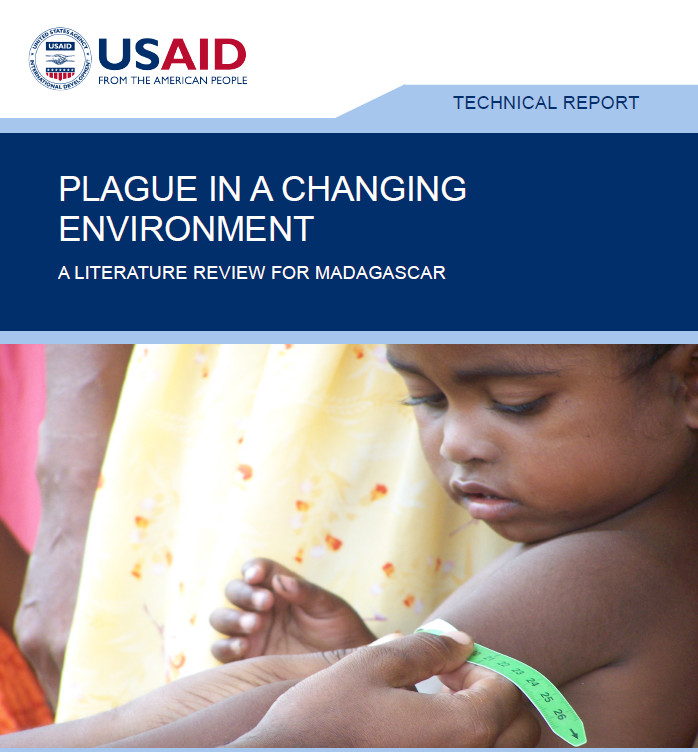
RYAN – Plague in a Changing Environment: A Literature Review for Madagascar
Sadie Ryan and Fernanda Zermoglio
Article first published online: 1 SEP 2019 USAID Technical Report
EXECUTIVE SUMMARY
This review identifies environmental factors that contribute to the emergence of plague and plague dynamics in Madagascar and aims to identify the potential implications for decisionmaking and intervention, particularly in a changing environment.
OVERALL FINDINGS
• The dynamics of plague in Madagascar, or what causes plague to emerge and spread, are different in highland and lowland areas. The ecology of the disease in urban areas in the highlands is different from that of urban areas in the lowlands. In the lowlands, near the port of Mahajanga, the Asian shrew (Suncus murinus), is most likely involved in the transmission cycle, and outbreaks have occurred during the drier seasons (usually July–November). In the highlands near the capital of Antananarivo, the rats, the black rat (Rattus rattus), and the sewer rat (R. norvegicus) are believed to be responsible for plague transmission, and outbreaks occur primarily during the rainy season (October–April).
• Urban overcrowding and poverty have long been associated with plague outbreaks. For example, sewer structures are likely to make R. norvegicus, currently limited to the west, more widely spread in cities.
• In rural areas, in addition to storing crops in houses, land clearing for agricultural activities such as cutting trees and setting bushfires promote the spread of rats and increase interactions with humans.
• There are persistent areas of disease outbreaks in the central and northern highlands. These are characterized by specific elevation, topography (areas above 800 meters), and climate, which shape flea and rat distributions. For example, outbreaks of plague in Antananarivo city occur between October and April, corresponding to warm and rainy weather, and plague is transmitted by the sewer rat (R. norvegicus).
• The primary rodent vector in Madagascar, Rattus rattus (black rat), is found everywhere—in houses, villages, fields, and forests. It has a gestation period of 21 days and a mean litter size of 5.4, meaning it can undergo rapid population growth. As warm-blooded mammals, rats are far more capable of behaviorally regulating temperature than insect vectors, meaning that they are likely to seek out domiciliary or peri-domiciliary habitats, or take advantage of other human manipulations of the environment, such as sewers, hedges, dense field crops, and storage spaces for food or other uses. This rat’s genetic structuring may correlate to landscape structuring (topography), and thus plague dispersal. Other less effective but still relevant vectors in Madagascar include the oriental rat flea (Xenopsylla cheopis), dogs, domestic cats, wild cats, chickens, guinea pigs, opossums, and wild rodents generally. It has additionally been found on pigs, skunks, badgers, deer, foxes, prairie dogs, ground squirrels, and burrowing owls.
Read the full USAID Technical Report